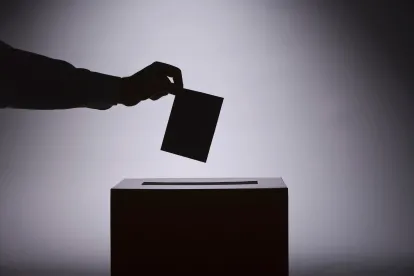The National Labor Relations Board (NLRB) has announced substantial changes to its representation case rules that will give employers more time before a union election. The new rules go into effect on April 16, 2020, but they may face challenges.
The new rules, published in the Federal Register on December 18, reflect a sea change in the NLRB’s procedural approach. Where the Board’s existing rules, overhauled in 2014, promoted election speed over clarity of legal issues, the revisions promote certainty in the would-be bargaining unit and the eligibility of voters before the votes are cast.
The 2014 rule revisions (implemented in 2015) were roundly criticized by employers as unnecessary, punitive, and prejudicial. Often called the “quickie election rule,” the 2014 rules introduced tight timelines on hearing dates and elections. They added significant paperwork obligations and reduced the ability to resolve questions of unit scope and voter eligibility before an election. Determining the supervisory status of employees is especially important to voter eligibility and can have profound legal implications for employers.
According to the Board majority, the new rules follow “in the footsteps” of the prior rules by “making targeted revisions designed to address specific, identified concerns and problems.” The NLRB also said the new rules “will facilitate more fairness, accuracy, orderly litigation, and efficiency in case processing.”
The 2014 Rules (In Effect Until April 16, 2020)
When a petition is filed in a representation case, a hearing typically will be scheduled eight calendar days later. Employers must file a comprehensive Statement of Position within seven days of being served.
Pre-election litigation of most questions is discouraged. The Board avoids holding pre-election hearings, favoring a prompt (“quickie”) election, reserving issues for possible litigation after the vote is held. The median time to a directed election has been 36 days after the petition is filed.
Predictably, such questions as “Is my job classification actually eligible to vote?” and “Exactly which other employees in our company will be in my bargaining unit?” were left unanswered while employees voted. Employees whose eligibility was questioned would vote “subject to challenge,” which left an air of possible illegitimacy to their votes.
Moreover, supervisors not only are ineligible to vote, but also are deemed representatives of management for the purposes of the National Labor Relations Act (NLRA) — the employer is bound by their conduct, which can result in unfair labor practice exposure for the company. Supervisory status is a notoriously nuanced and fact-sensitive area of the law. In many cases, the parties can safely rely only on a formal determination by the Board. However, the current rules often deferred resolution of the issue, putting employers in the difficult position of anticipating the Board’s possible ruling.
New Rules
The new rules emphasize pre-election clarity, while sacrificing some election speed. The federal agency will have more time to receive papers, have a formal hearing, receive and review briefs, issue a thorough decision, and actually conduct an on-site secret ballot election.
When a petition is filed in a representation case, a hearing typically will be scheduled 18 calendar days later (more, if there is good cause). Employers must file a comprehensive Statement of Position within 10 calendar days of being served with papers. Petitioning unions must serve a responsive Statement of Position prior to the hearing date.
If the parties are unable to agree on election details (such as the job classifications to be included in the unit and the supervisory status of certain employees) and a hearing is necessary, the election will not be scheduled until a minimum of 20 business days (at least 28 calendar days) after the NLRB regional director issues a ruling called a “direction of election.” Most “directed” elections likely will be held two-to-three months from the day the petition was filed.
In many cases, an immediate decision on review (appeal of the direction of election) will not be practical and the ballots of the employees whose votes are disputed will be impounded, to be opened only if the Board rules the voters were properly included. This prevents the confusion caused by votes being counted, only to be rejected later by a Board decision.
While the new rules continue to allow local NLRB regions “a certain degree of discretion” to defer questions of eligibility, the Board states that regional directors “should be encouraged to resolve all of them, rather than defer, as much as possible, and should not as a general rule defer issues that affect more than 10% of the unit.” Thus, the NLRB is promoting pre-election hearings, a reversal from the current rules. Whether this “10%” guideline will be applied as a floor (meaning, no hearings will be held unless the issues comprise at least 10% of the unit sought) remains to be seen.
Open Issue
The new rules do not address the amount of time after a petition is filed an election should be conducted in cases that do not result in a hearing — in other words, those in which the parties (the employer and the union) agree on the unit scope and eligibility questions. Historically, these have been the majority of cases. The 20-business-day minimum from the direction of election will not apply to these cases. For now, the 2014 rules’ language that elections should be scheduled “as soon as is practicable” will remain. In these “agreement” cases, records show a median of 22 days to an election from the date of the petition. The additional time between the date the petition was filed and the hearing date under the new rules, alone, will increase this number, but to what extent remains to be seen.
***
Each aspect of the new rules appears geared to enhancing the resolution of questions important to the process. The Board majority explains the purpose of sacrificing speed: “The additional time will permit parties to … better prepare for the hearing, thus promoting orderly litigation … by narrowing and focusing the issues to be litigated … to reduce the number of cases in which issues remain unresolved at the time of the election … [and] by promoting … transparency and fair and accurate voting.”
Opponents likely will challenge the new rules in court. The dissenting Board member argued that the majority’s failure to submit these proposed rule changes for public comment before implementation was “arbitrary and capricious” and thus, an abuse of discretion under the Administrative Procedure Act. The majority stated that procedural rules such as these do not require a comment period and is supported by precedents.







 />i
/>i

